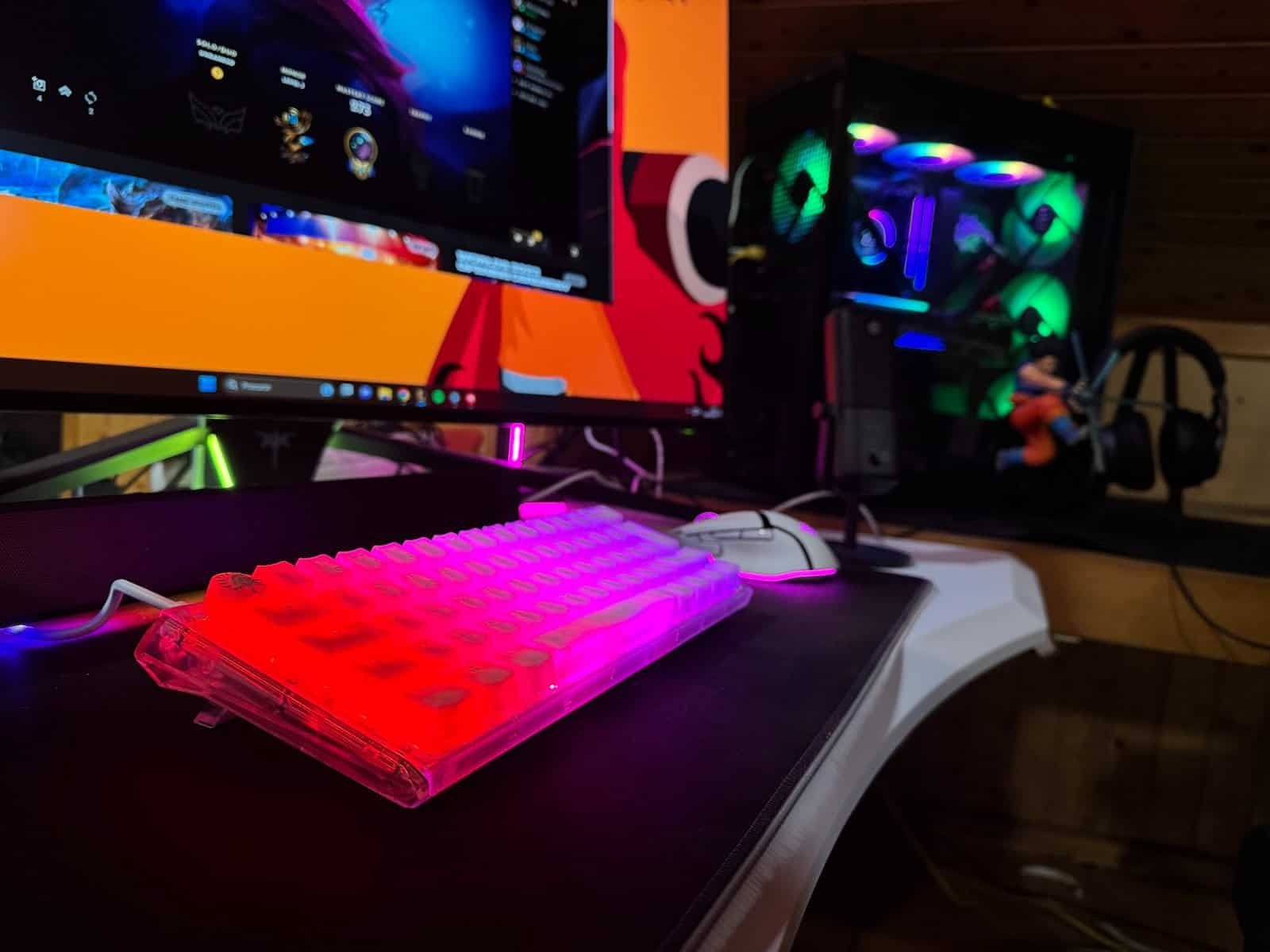The world of technology is constantly evolving, which is exactly why over the last 25 years, we have seen the transition from SDRAM (Synchronous Dynamic RAM) for DDR (Double Data Rate) SDRAM, then to DDR2, DDR3 It is DDR4 in a cycle of more or less five years.
That being said, we are now finally entering fully into the generation DDR5when using memory kits with support for the standard on AMD and Intel platforms at monumental speeds of up to 8,000MT/second at 4,000MHz.
This may seem impressive, but the obvious question is how much attention we should pay to our RAM instead of, say, the CPU, motherboard, graphics card, SSD or who knows, other elements that may be more important for your type of use. .

Therefore, first of all, it is important to understand what the main mission of RAM memory is in our computer! Well then, RAM means “Random Access Memory“, i.e. random access memory.
More specifically, this means that this type of memory serves as super-fast temporary storage for the many applications you run every day on your PC, smartphone, tablet or even smartwatch.
Once again we have to emphasize… It is an extremely fast memory! Many times faster than your computer’s SSD, or NAND Flash chips that bring your smartphone’s storage to life.
That being said, having more memory means you will have the ability to have more programs open, or perhaps more importantly, more demanding programs open at the same time.
In addition to greater memory capacity, greater speed also implies, in theory, a higher level of performance for all these applications.
However, in the same way that having a fast car doesn’t mean you can always drive at 200 km/h, spending a lot of money on extremely fast RAM can also result in gains that won’t make a significant difference in your day-to-day use.
Consumers don’t understand RAM memory (yet)!

Having more RAM, or faster memory, does not always mean an aggressive increase in your machine’s performance level. Basically, the idea of having more RAM is more to prevent everything from slowing down.
Imagine that you had little money when you bought your first PC, and you opted for a single 8GB module (Single-Channel) instead of a 16GB or 32GB kit (Dual-Channel). Well, if its use is simple, almost always very focused on productivity/work, and there are no problems with slowness or “crashes”. It’s a clear sign that your current 8GB is useful, and therefore you don’t need to spend more money on more RAM.
However, if you want to play games, or run image or video editing programs, these same 8GB will no longer be enough, and therefore, adding more RAM memory will result in a very significant increase in performance IN YOUR specific CASE.
More RAM or higher Speed?

We have already understood that RAM is one of the main components of a PC and therefore it is important that it has at least a certain amount of RAM.
However, there is more to RAM than just capacity: A frequency and the latency are also important considerations at the time of purchase.
Interestingly, this is an issue that gained new importance in 2021 when the first platforms capable of supporting DDR4 and DDR5 RAM with the same exact processors began to appear. At the time, the official maximum frequency for DDR4 RAM was 3200 MHz, while DDR5 RAM started at 4800 MHz. A very interesting increase of 50%. However, as you can imagine, this 50% increase never translated into a significant increase in real user usage.
Because at the same time, latency increased very significantly between the old DDR4 kits and the new DDR5 kits. At the time, CL14 on most 3200MHz DDR4 kits to CL40 on most 4800MHz DDR5 kits.
Is faster memory better?
It’s complicated, but it depends!
Ultimately, everything will fall to the CPU, which in turn needs access to a lot of critical data, which can and should be transferred quickly.

However, in fact, CPUs even have their own unique high-speed memory called cache. But there it is, the cache is only available in small quantities (even the most powerful and expensive processors on the market have less than 100MB of cache in total).
This is exactly why the processor (CPU) will inevitably ask the RAM for some data. This way, when this happens, the RAM becomes the “bottleneck” – (Bottleneck).
- Bottleneck (Bottleneck Effect) – In the world of computing, a bottleneck occurs when the capacity of an application or computer system is limited by a single component. Just like the neck of a bottle that slows down the flow of water.
So in theory, faster RAM could mean better performance. But in practice, not all software is equal and not all applications and games depend on RAM in the same way. So, just as not all applications and games benefit from more CPU cores, faster individual cores or faster graphics… Not all applications will gain new levels of performance with faster RAM.
In other words, in the same way that the amount of RAM depends on its use, its speed will also depend on… Yes!
What is the recommendation?
Well, first of all, analyze your needs and your budget.
If you are building a high-end machine, with enough money to choose only high-end components. Maybe it makes sense to buy a RAM memory kit at the same level.
However, if you have a limited budget, it may make more sense to buy a RAM memory kit with a lower speed. In other words, taking the money that you would spend extra to purchase a CPU faster or graphics card more capable.
Furthermore, it is also important to pay attention to storage SSD! Since the year 2024 will be a time of almost absurd prices for this component.

 Business1 year ago
Business1 year ago
 Business12 months ago
Business12 months ago
 Entertainment1 year ago
Entertainment1 year ago
 Tech9 months ago
Tech9 months ago












